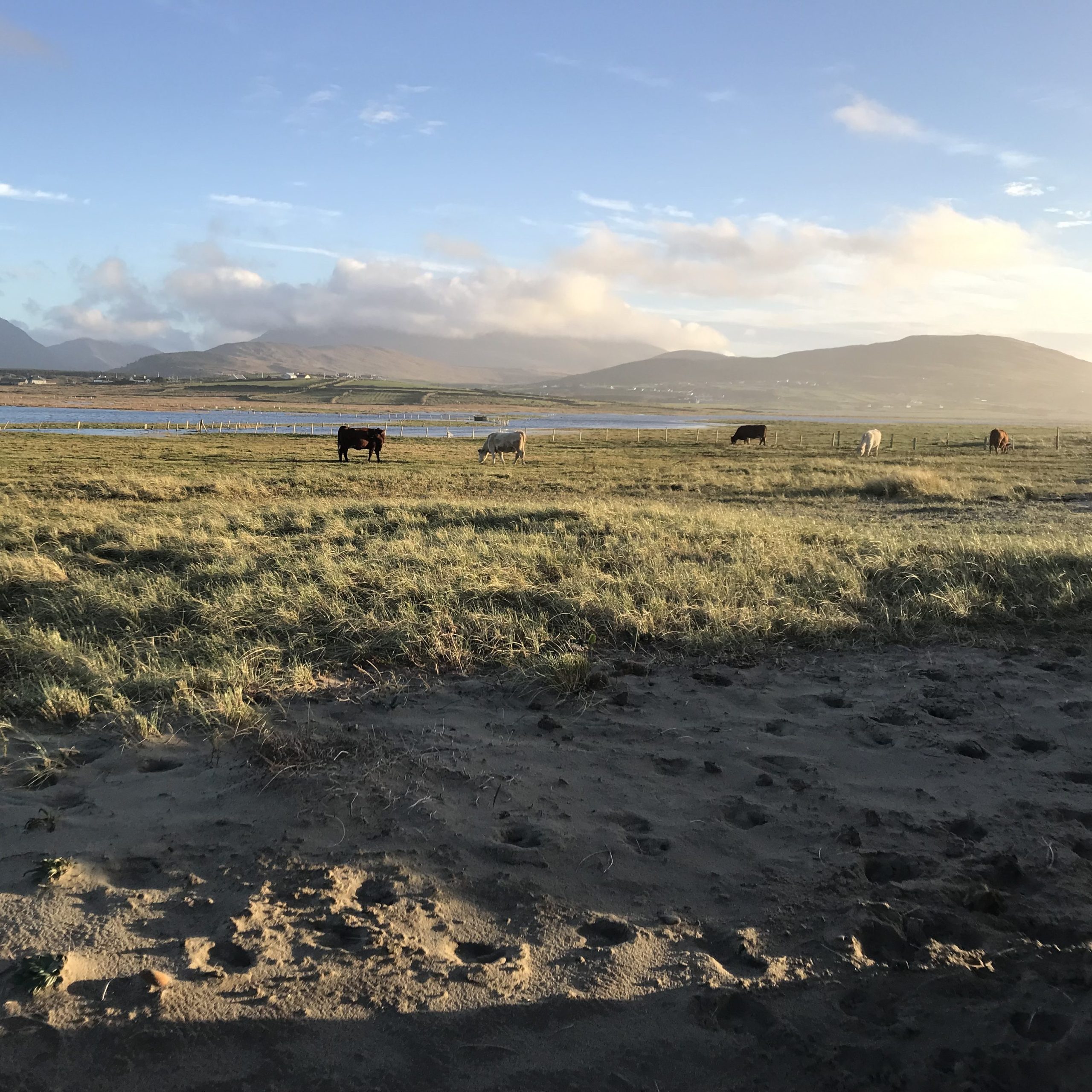The site is broken up into the three lake zones known locally as Lough Baun, Lough Cahasy and Roonith (Lough Cahasy, Lough Baun and Roonah Lough SAC)
This site comprises a chain of wetlands on the south Mayo coast. A sandy beach forms the shoreline, with occasional outcrops of exposed bedrock, with shingle and boulder bars also present. Behind these lie sand hills and Machair, three lagoon-type lakes and their associated riverine channels. The occurrence of large accumulations of sandy substrates at Lough Cahasy is characterised by fixed dune grassland.
Agriculture has been traditionally the main land use at this site with growing recreational use which is affecting the beach and shingle ridge. While there are a number of access points to the beach, the majority of beach users make use of the two main car parks, but cars and camper vans also park on the shingle ridge and accessible areas of grassland.
The wetlands and surrounding grazed grasslands at this site provide habitat for breeding waders and other wildfowl, as well as important populations of wintering wildfowl. On top pf this, Loughs Cahasy, Baun and Roonagh together comprise a nationally important site for breeding waders. The sites supported a total breeding wader population of 44 pairs in 2019. This population increased from 28 pairs in 1985 to a peak of 58 pairs in 2009, and has subsequently declined to 44 pairs in 2019; a 24% total population decline. This population trend mirrors that of many other sites in coastal Co. Mayo, such as the Inishkea Islands. In 2019, the site held: four pairs of breeding Dunlin, (an estimated 8% of the national breeding population) and 19 pairs of Lapwing (an estimated 4% of the national breeding population).
The intact transitions from lake shore, through Machair and fixed dunes to the shingle bank and fore dunes is significant, and such intact transitions are important for pollinating species that require different resources for shelter and forage. Pollinator species recorded from this site and their status on Ireland’s Red List of species include:
Near Threatened: Small Heath (Coenonympha pamphilus), Large Red Tailed Bumble Bee (Bombus lapidarius), Moss Carder-bee (Bombus muscorum)**
Endangered: Wall Brown (Lasiommata megera)
** listed as vulnerable at a European level.

